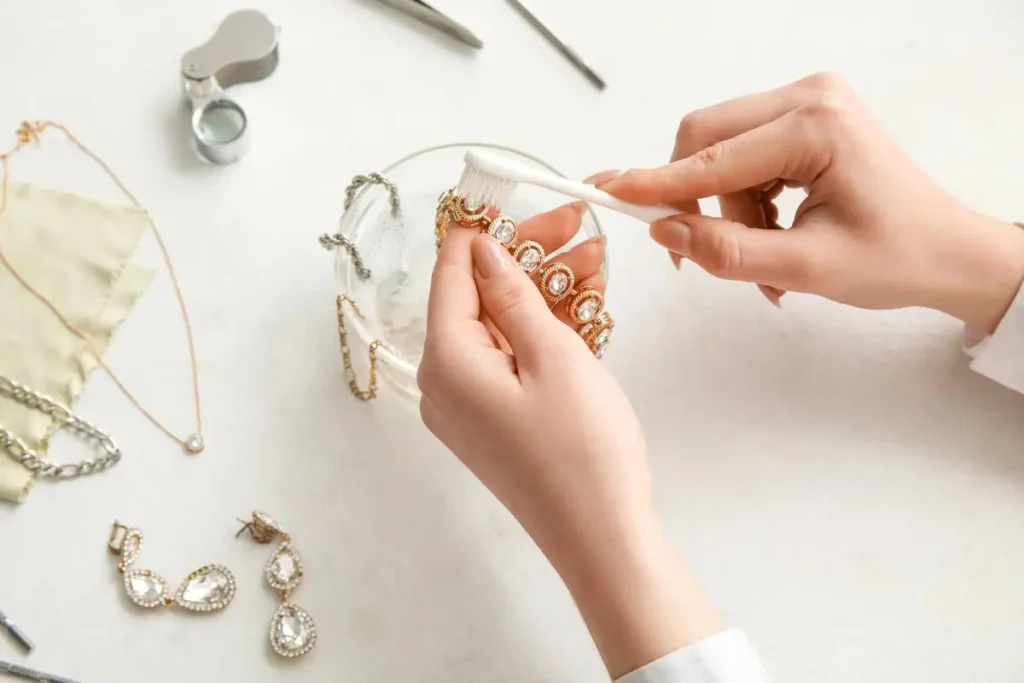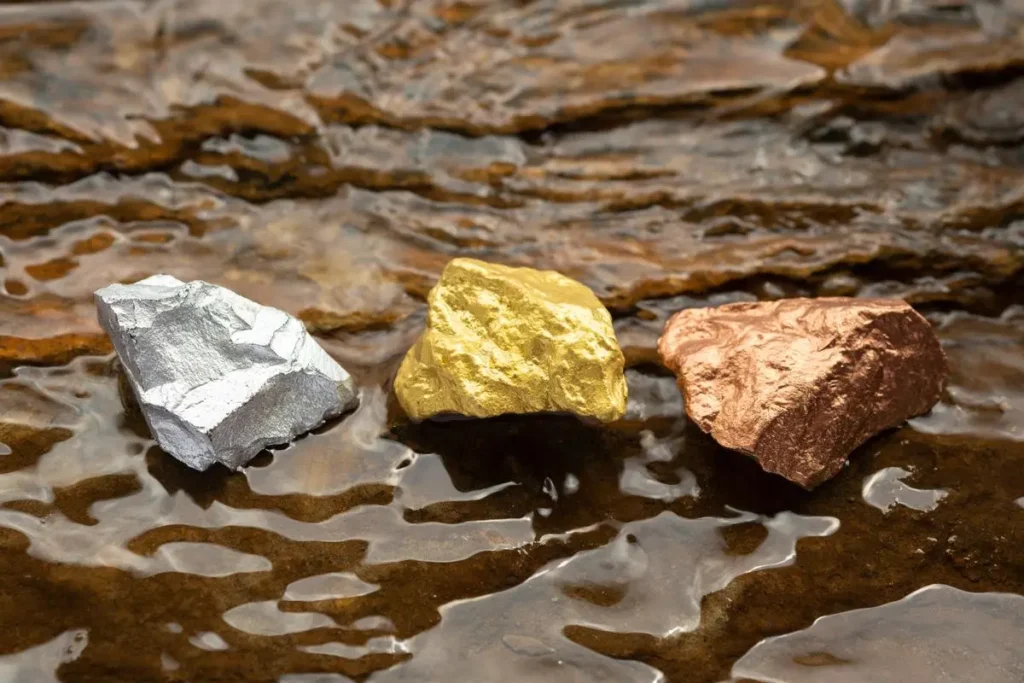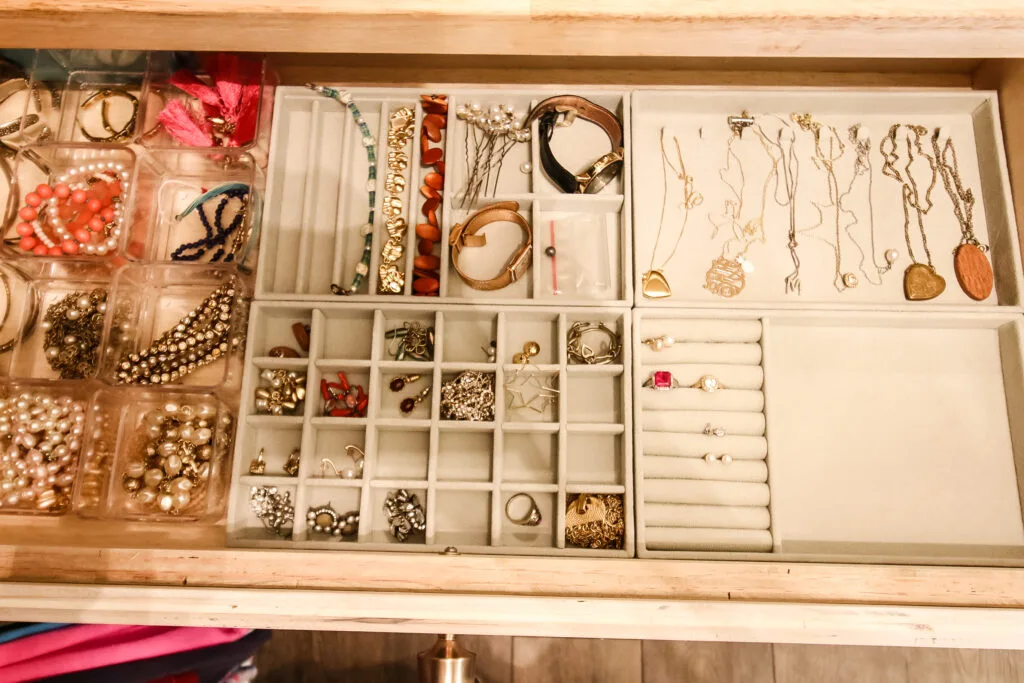Introduction
Jewelry is a significant part of people’s lives, serving as a bridge between past and present, symbolizing love and commitment, and a means of personal expression.

However, proper care and maintenance are essential for its longevity. Exposure to everyday elements can diminish the luster of gemstones and metals.
This blog post provides comprehensive tips on jewelry care, including cleaning, storage techniques, and professional restoration advice.
Joining this journey ensures your jewelry remains as exquisite as the day you acquired it.
Jewelry Cleaning Tips
Cleaning Gold Jewelry
Mix mild dish soap with warm water to create a cleaning solution. Soak gold jewelry for 15-30 minutes to loosen dirt. Gently scrub surfaces and hard-to-reach areas with a toothbrush. Rinse thoroughly with warm water to remove soap residue. Dry and polish to restore shine.

Cleaning Silver Jewelry
Create a baking soda paste by mixing baking soda and water. Apply to tarnished silver jewelry, avoid gemstones. Gently rub the paste, rinse with warm water, dry, and polish with a silver cloth to restore shine. Avoid scratching gemstones. Rinse and dry the jewelry.
Cleaning Gemstone Jewelry
To clean gemstone jewelry, inspect for loose or damaged stones and take them to a jeweler for repairs. Prepare a soapy solution by mixing mild dish soap in lukewarm water, soak for a few minutes, gently brush around gemstones; rinse and dry; and avoid soaking certain gemstones like pearls, opals, and emeralds.
Understand the Jewelry Materials
Gold, silver, gemstones, platinum, pearls, costume jewelry, platinum plating, gold vermeil, and stainless steel are all essential metals for jewelry care.
Each of these materials has unique characteristics that influence how you should care for your jewelry.
Gold, while durable, can tarnish over time. Therefore, regular cleaning and polishing are essential to maintaining its shine.

Silver, on the other hand, is prone to tarnishing due to its reaction with sulfur and moisture in the air. To prevent tarnish, it’s crucial to store silver jewelry in airtight containers and clean it regularly with a silver polishing cloth.
Gemstones, such as diamonds and sapphires, vary in hardness and durability. Some require gentler care, while others are more resilient.
Platinum is dense and durable, but it can develop surface scratches over time. To maintain its shine, regular polishing by a professional jeweler is recommended.
Pearls, being organic gemstones, require special care. They are sensitive to acids, chemicals, and moisture, so it’s essential to avoid exposing them to perfume, hairspray, and water.
Costume jewelry, often made of base metals and synthetic materials, can be delicate and prone to damage. Handle it with care, avoiding exposure to moisture and chemicals.
In addition to these metals, jewelry may also feature platinum plating, gold vermeil, or stainless steel, each with its own unique care requirements.
Understanding the specific materials in your jewelry empowers you to choose the right care routine to ensure their lasting beauty and value.
How to Keep Your Jewelry Safe
Protecting jewelry is crucial for preserving sentimental and monetary value, preventing theft, minimizing loss, and ensuring insurance coverage.
It protects financial assets like engagement rings, gemstones, and precious metals and deters theft.
Proper security measures like safes and alarms deter thieves, while insurance policies often require proof of safeguarding measures to recover monetary value in case of loss or theft.
To protect your valuable jewelry, invest in a secure safe, install a security system, use a safety deposit box, maintain a detailed inventory, wear jewelry mindfully, have regular appraisals, use portable travel safes, and inform trusted individuals about your collection and security measures.
Regularly appraise your jewelry to ensure up-to-date insurance coverage and keep valuable pieces safe during travel.
How to Store Your Jewelry
When jewelry is not stored correctly, it can lead to various issues, including tangling, tarnishing, and damage.
Tangled necklaces, tarnished silver, and scratched gemstones are just a few of the problems that can arise.
To avoid these issues and keep your jewelry in pristine condition, effective storage is crucial.

Here are jewelry care tips for different types of jewelry:
For Necklaces
Untangle with Care: To prevent tangling, hang necklaces individually or lay them flat. For delicate chains, use necklace stands or hooks to keep them separate.
Store Separately: Store necklaces separately in fabric pouches, jewelry boxes with individual compartments, or dedicated necklace organizers to prevent scratches and tangles.
Avoid Moisture: Remove necklaces before swimming, showering, or exercising to prevent moisture damage and tarnishing.
Clean Gently: Use a soft, damp cloth to clean necklaces. For stubborn dirt, use a mild jewelry cleaning solution and a soft brush. Dry thoroughly before storing.
For Bracelets
Keep Them Apart: Store bracelets individually or wrap them in a soft cloth to prevent scratching and tangling. Consider using jewelry rolls for easy organization.
Beware of Chemicals: Avoid exposing bracelets to harsh chemicals found in cleaning products or cosmetics, as they can damage the metal and gemstones.
Regular Inspections: Periodically check clasps and fasteners for wear and tear. Get them repaired promptly to prevent loss or damage.
For Earrings
Pair Them Up: Store earrings in pairs to prevent misplacement. Earring organizers with individual compartments are ideal for this purpose.
Secure Backs: Ensure the earring backs are snug to prevent loss. Consider using plastic or silicone backs for added security.
Clean with Caution: Clean earrings with a soft, damp cloth. Avoid submerging them in water, especially if they contain delicate gemstones or pearls.
For Rings
Avoid Stacking: If you must stack rings, use ring guards or spacers to prevent scratches. Store them individually in ring boxes or compartments.
Regular Prong Checks: Inspect the prongs holding gemstones to ensure they are secure. Loose prongs can lead to gemstone loss.
Take Rings Off During Activities: Remove rings before activities that could expose them to harsh chemicals, like gardening or cleaning.
For Watches
Winding and Maintenance: If you have automatic watches, wind them periodically to keep them running. Service mechanical watches according to the manufacturer’s recommendations.
Keep Away from Magnets: Avoid placing watches near magnets, as they can affect the timekeeping mechanism.
Store in Watch Cases: Use watch cases or watch rolls to protect watches from dust and scratches.
Tips for Traveling with Jewelry
Packing and Securing Jewelry for Trips
To protect your jewelry during a trip, use a dedicated case, pack light, separate pieces, keep them in your carry-on bag, and take photos before packing. This will prevent tangling, scratches, and theft. Keep valuable jewelry in your carry-on bag for easy identification.
Hotel and In-Flight Precautions
Use a hotel safe for jewelry storage, avoid displaying valuable items in windows or on tables, store jewelry securely in personal items during flights, and minimize wear during flights to reduce the risk of loss or damage.
Travel Insurance for Valuable Pieces
To ensure jewelry coverage while traveling, review your current insurance policy, consider specialized coverage for high-value items, maintain documentation of your jewelry, and be aware of customs regulations for valuable items, as failing to declare them may lead to issues.
Keep Your Jewelry Away From Harmful Chemicals
Chlorine, ammonia, alcohol, acids, and saltwater can tarnish metals, especially silver and gold alloys.
Ammonia dulls gemstone luster, alcohol-based products cause discoloration, acids corrode silver, and saltwater accelerates tarnishing, making it essential to rinse jewelry after swimming.
To maintain jewelry, apply lotions, perfumes, and hairsprays before wearing them to minimize exposure to chemicals. After use, gently wipe it down with a dry cloth.
Remove jewelry when cleaning or swimming in chlorinated pools or saltwater. Store jewelry in pouches or compartments to prevent contact with chemicals.
When to Remove Your Jewelry
Sports, household chores, swimming, cooking, sleeping with jewelry, and traveling can all cause damage to jewelry.
Contact sports, household chores, swimming, cooking, sleeping with jewelry, and frequent travel can all cause accidental impacts, tarnishment, and loss of jewelry.
Proper cleaning and care can prevent these risks and ensure the safety of your jewelry.
Wearing jewelry during sleep can provide comfort, prevent damage, and reduce loss risk due to potential tangles, earring irritation, and slippage.
Ring misshaping, earring snags, and chemical damage can cause ring damage, while ring misshaping can occur during gym workouts, earring snags can occur in gardening, and chemical damage can occur in bathrooms.
FAQ’s
For valuable jewelry pieces, consider getting insurance coverage. Homeowner’s or renter’s insurance policies may cover jewelry, but specialized jewelry insurance can offer more comprehensive coverage for loss, theft, or damage.
The care of gemstone jewelry varies based on the type of gem. For example, some gemstones, like opals and pearls, are delicate and require gentler cleaning methods. Always check the specific care instructions for the gemstone in your jewelry.
If a gemstone becomes loose, refrain from wearing the jewelry and take it to a professional jeweler for repair to prevent further damage or loss.
Avoid exposing your jewelry to chemicals found in cleaning products, cosmetics, and harsh substances. Remove your jewelry before engaging in activities that involve contact with these substances.
Read more…….
